I cleaned up the excess flox on the inside and outside of the doghouse, and then trimmed the slider seal block to a shape approximating what the plans specify. There's no need to be super exact here, especially since I'm not trying to make the seal block fit into a pre-bent aluminum doghouse. As long as it fits beneath the skirt and seals okay, the shape is fine.
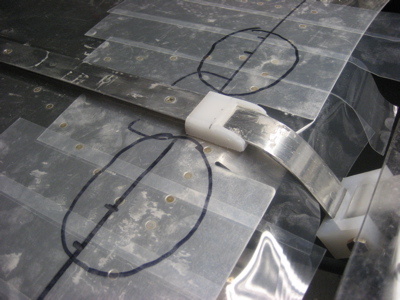
I put some packing tape on the fuselage adjacent to the forward end of the canopy track, and followed it with a thin layer of Superfil.
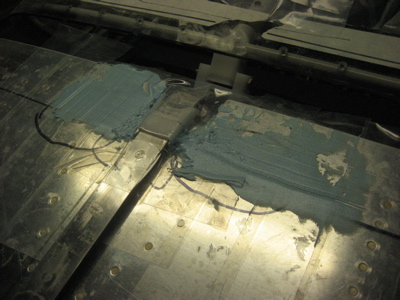
Then I put the canopy skirt back on the airplane, fixed in place with clecoes and held down with buckets of heavy stuff. This is all part of the effort to get a perfect seal and keep out cold air and rain.
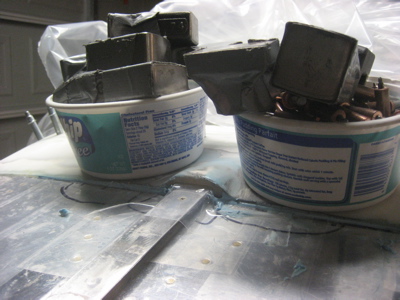
Several hours later, I sanded off the excess filler and was left with a nice flat bottom surface that should seal pretty well.
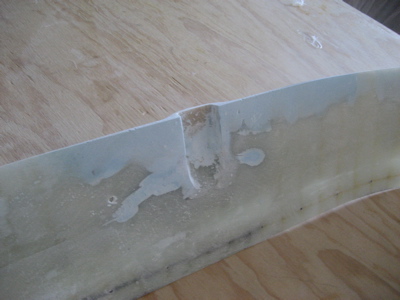
After wiping down the exterior surface in order to get rid of all the sanding dust, I put the skirt back on the airplane, with a fresh new (i.e. hole-free) plastic drop cloth between it and the rest of the airplane.
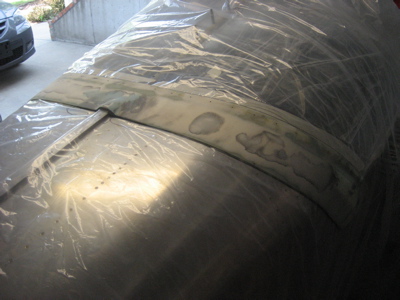
Then I painted a layer of epoxy onto the skirt, and laid up three plies of 6-oz cloth over it. Afterwards, I spent some time squeegeeing out excess epoxy and making sure the peel-ply was properly adhering everywhere.
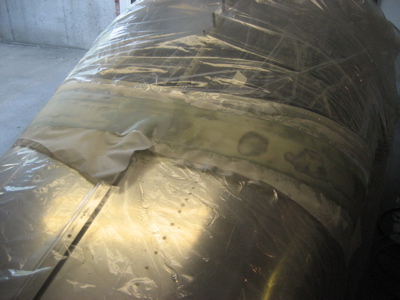
The goal of this final layup is to provide a durable outer surface for the skirt that will keep the buildups of filler from cracking or getting dinged. Normally the experts advise you to never lay up glass over micro, but since the canopy skirt is not a structural piece I'm not terribly worried about the reduced strength that results from sandwiching micro in between glass layers. I also made sure to rough up the surface with 80 grit before doing the layup, in order to give the epoxy plenty of surface to grab onto. Considering that the plans call for fiberglass over filler when constructing the fairing for the bottom of the windshield, I judge that the same approach ought to be okay for this application too.